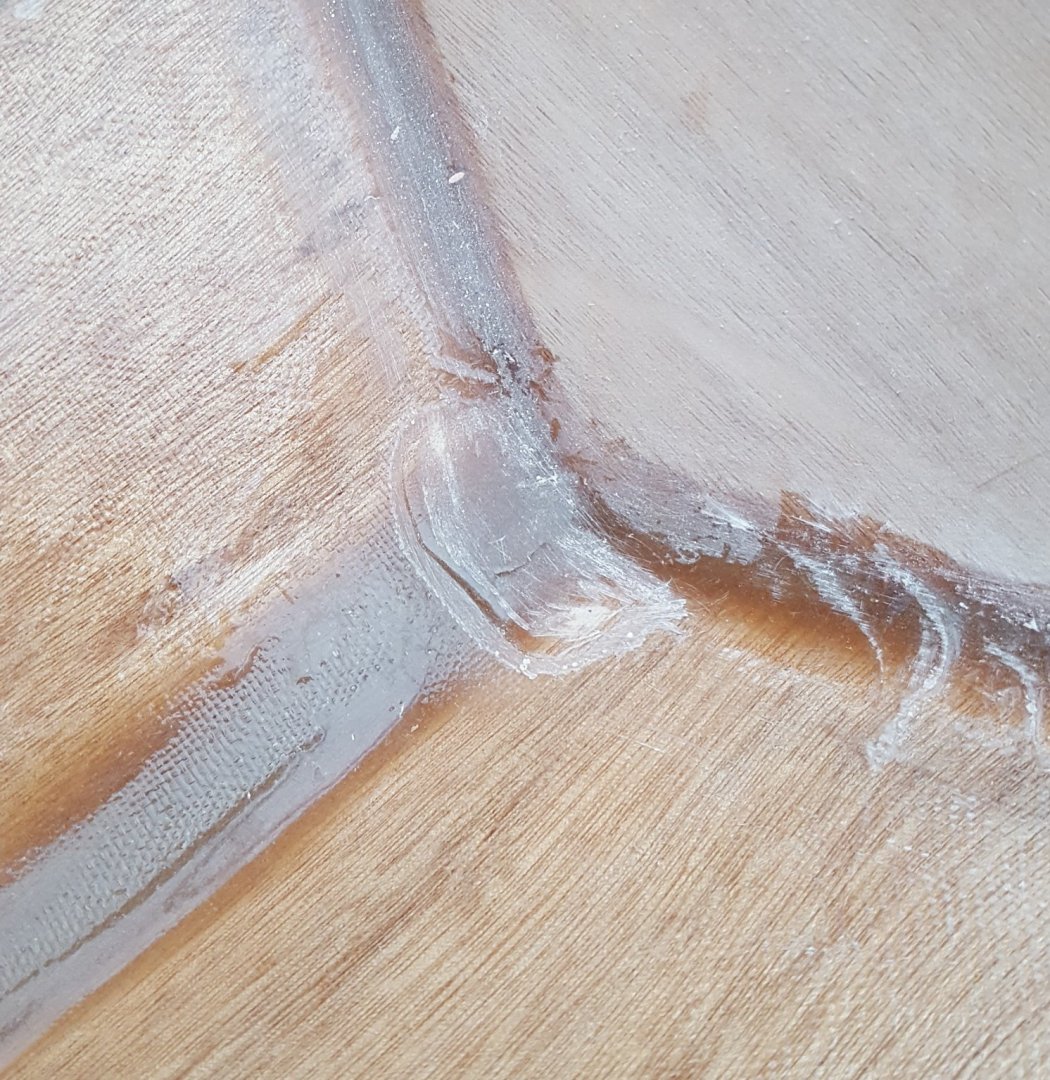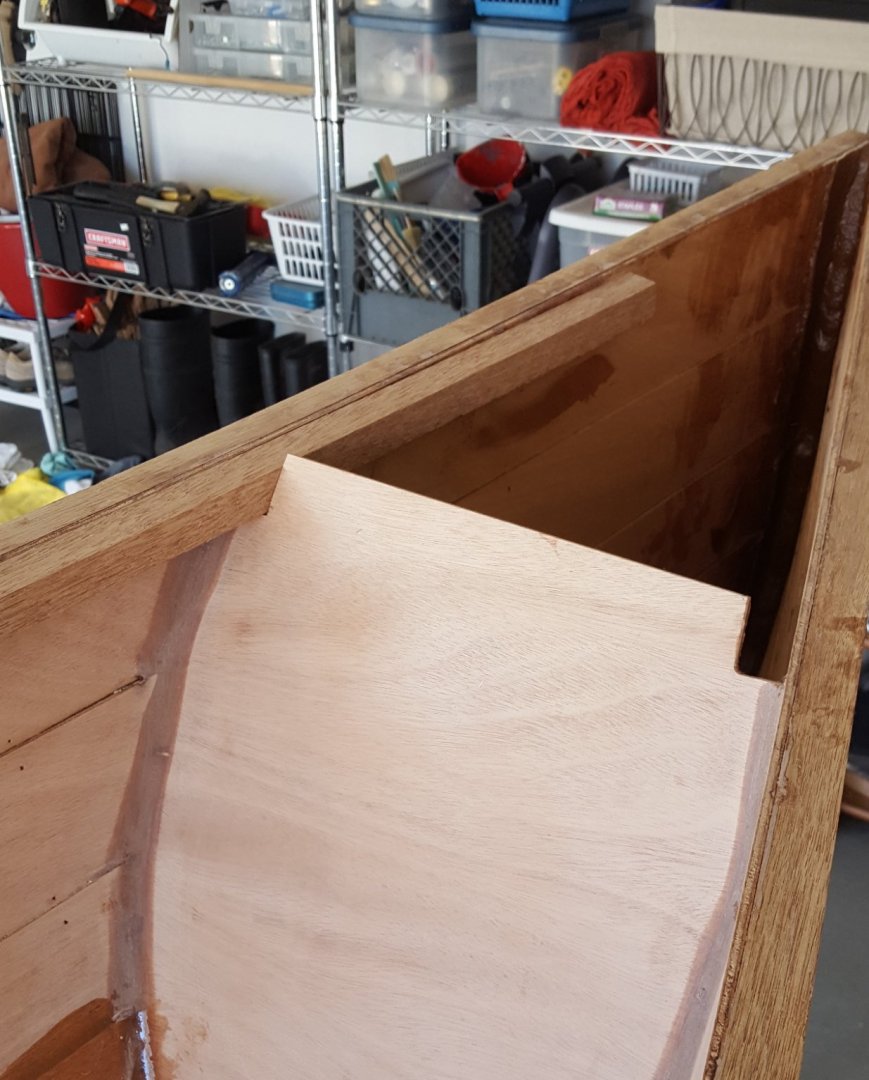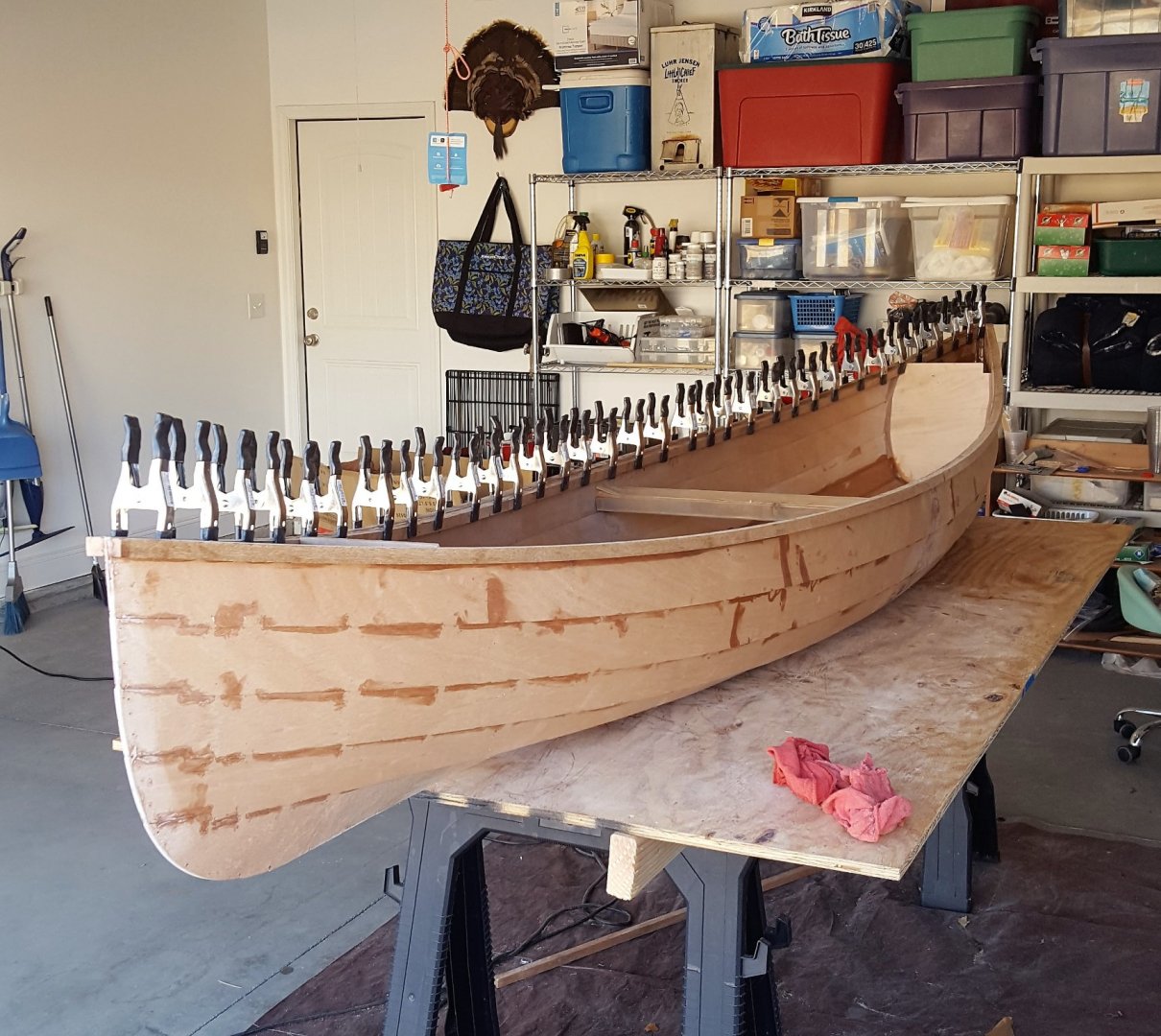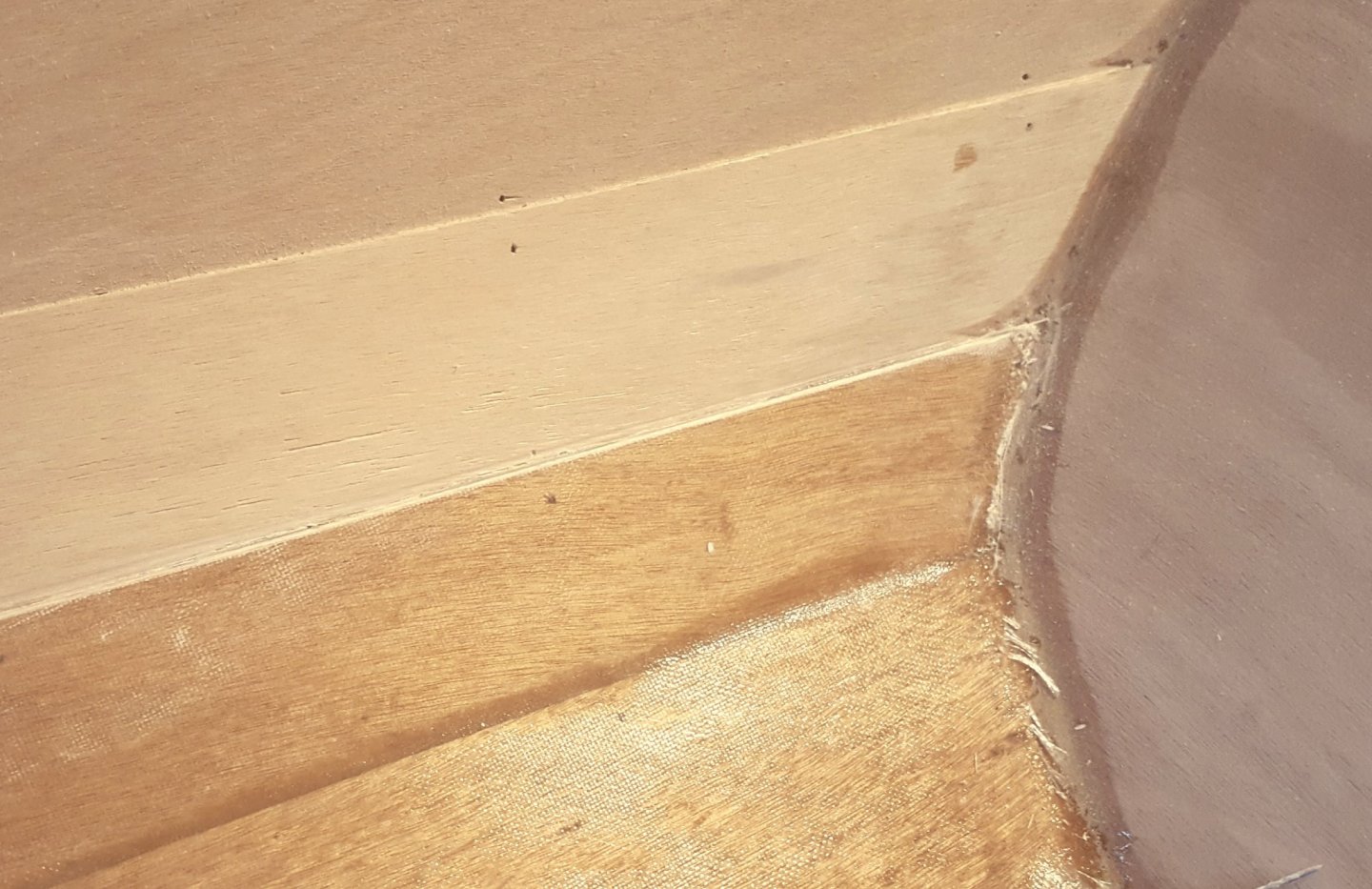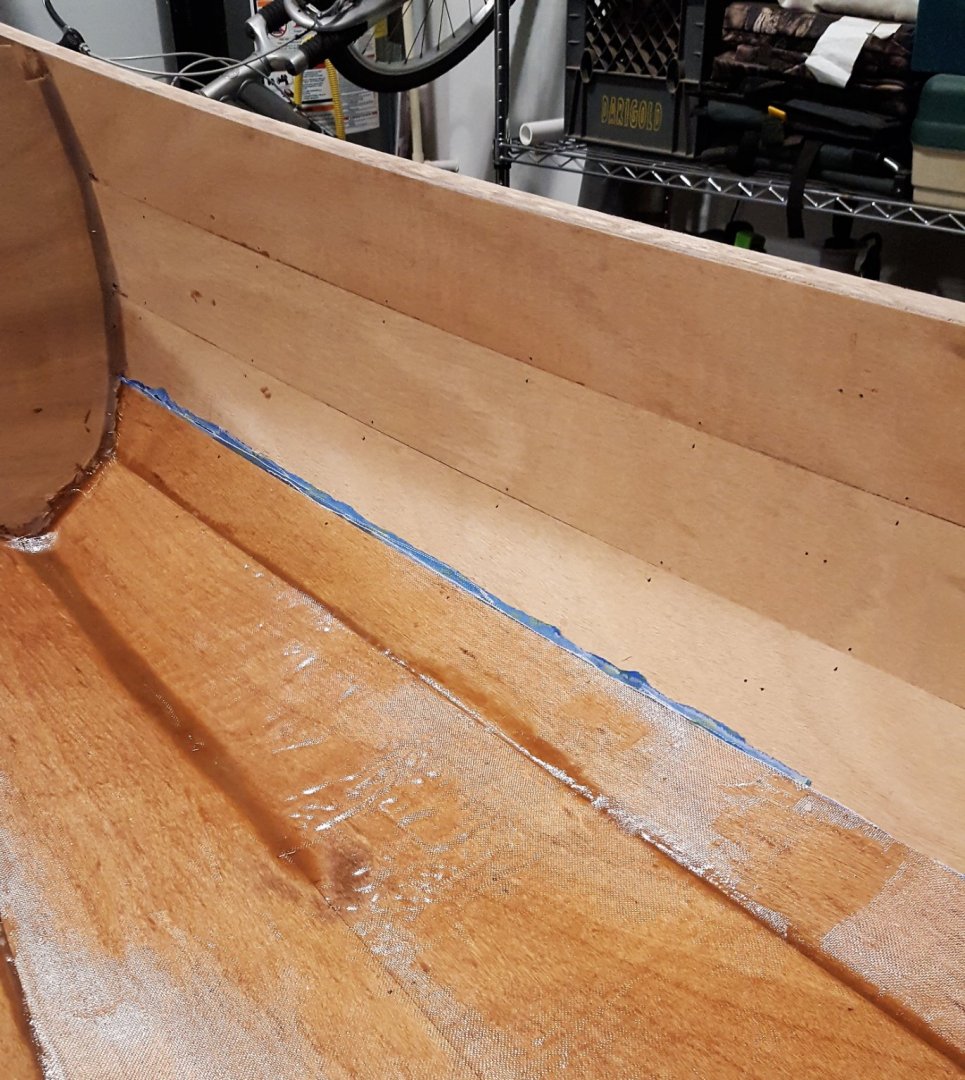-
Posts
10,524 -
Joined
-
Last visited
Content Type
Profiles
Forums
Gallery
Events
Everything posted by ccoyle
-
Hello, Al. I'm all for making improvements to instruction manuals, though I am not personally familiar with BlueJacket's manuals. My only comment, for whatever it's worth, is that 11 x 17 is on the large size; on my small desk that would take up about a quarter of the work space. Of course that might not be an issue with some or perhaps even most other builders.
-
You found them (see here)! I have not built any of WAK's kits, except if you consider some of the aircraft designed by Lech Kołodziejski that were previously published by CardPlane. I have, though, completed some ships by Digital Navy, Paper Shipwright, JSC, and Modelik -- I have a bunch of Paper Shipwright and HMV kits in my stash.
- 4 replies
-
- Dunquerque
- WAK
-
(and 1 more)
Tagged with:
-
On we go. This first photo shows one of my fiberglassing boo-boos. I trimmed away the excess cloth and sanded the sharp edges smooth. Now, as far as a repair goes, I'm thinking that perhaps the easiest thing to do would be to sand down the spot level with the surrounding fiberglass and then simply fill the divot with some thickened epoxy. Any thoughts on this? I don't think that there will be any structural issues with the few spots I need to patch -- as you can see, there's already an epoxy fillet beneath this particular spot. Next task was to finish sealing the interior of the bow and stern compartments -- or perhaps that's bow and bow compartments since both ends are identical at this point. Eventually I'll have to pick one end or the other as the bow. I didn't photograph this step, as it's quite messy, since the work has to be done at very awkward angles inside the cramped compartments. Then came the interior rub rails. First bit is to finish widening the pre-cut slots in the bulkheads. I intended to do both rails today, since I was able to dry fit the first one with only half of the clamps I have on hand. But of course once I got the rail slathered in epoxy, the stuff acted like a lubricant, meaning I had to use all of my clamps to get it to stay in place. There is a lot of tension on this poor piece of 1x1 until the epoxy sets -- notice I have my temporary spreader in place. So, that's it for at least another 24 hours.
-
Welcome, Dennis. The Amati Lady Nelson is a perfectly acceptable first model, as it has the "three nots" needed for beginners, i.e. not a lot of planking, not a lot of guns, and not a lot of rigging. The instructions should be pretty decent, and the designer -- Chris Watton -- is a member here. Also, there are a lot of finished cutter build logs and gallery entries for inspiration and tips. Cheers!
-
I have been using Rapid Fuse lately and really like it.
-
Welcome, and good work on your model! Flirt's designer, Chris Watton, is an active member here.
-
I got the seams cleaned up, but there were still bits of blue tape residue visible. I decided to epoxy the seams with a wood flour/epoxy mix. It hides the remaining residue and ultimately will strengthen the seam, so why not? I didn't take a picture of this step, because it's not particularly visually interesting. Once the epoxy sets, the next step will be adding the interior rub rails.
-
My messy fiberglass job has created a can load of extra work for myself, but I did manage to trim some more of the ragged edges today, and I also hit upon a workable method of tidying up the sharp edges and tape residue that are left over -- my Dremel tool skills have come in handy in this regard. This photo shows the cleaned-up edge I was able to get before it got too dim in my garage to continue working.
-
-
Well, this has really been an up-and-down roller coaster ride -- some parts go easy, others are a train wreck, a few are both in turns. Here's where I'm at now. Along with my crappy fiberglassing, you can see the trouble I have had so far with removing the tape, which I expected would be easy (ha!). The tape's purpose was to keep the resin-impregnated fiberglass cloth from sticking to the third strakes, and it was supposed to be easily removed by sliding a utility knife along the seam between the 2nd and 3rd strakes. Nobody warned me though about the trouble that results from resin pooling up along the seam and beneath the cloth (although it makes perfect sense now). In those areas, the knife doesn't slide easily in the seam, but rather wants to skate along the top of the hardened resin/cloth. Ugh. I'm having so much fun. But the next one will be easier, right?
-
One of the new or upcoming ship's boat kits from Vanguard would probably be a passable substitute. Master Korabel also makes great ship's boat kits, but I believe theirs are smaller, i.e. 1/72 scale vs. 1/64 for Vanguard.
- 51 replies
-
- Model Shipways
- Baltimore Clipper
-
(and 1 more)
Tagged with:
-
I was totally into 1/35 scale armor as a kid (built whatever Tamiya or Italeri kits I happened upon on the shelves of the local hobby shop) and built ships and aircraft as well, but I shy away from the thought of trying a plastic kit again, only because they are relatively expensive and, in my opinion, have a steep learning curve for getting to the place where one can build a decent-looking result. But I marvel at folks who can use PE and weathering to produce very realistic-looking plastic models, like our own Greg here at MSW. It's an art form.
- 195 replies
-
- enterprise
- constructo
-
(and 1 more)
Tagged with:
-
I have seen a finished example of this kit up close and in person, and it can truly be built into an impressive model. The only thing that bothers me about the kit is the included ship's boat, which I believe is an off-the-shelf item from MS. The real PoB's ship's boat is a thing of beauty, and I think it would be worthwhile to scout around for replacement of the kit item. Good luck!
- 51 replies
-
- Model Shipways
- Baltimore Clipper
-
(and 1 more)
Tagged with:
About us
Modelshipworld - Advancing Ship Modeling through Research
SSL Secured
Your security is important for us so this Website is SSL-Secured
NRG Mailing Address
Nautical Research Guild
237 South Lincoln Street
Westmont IL, 60559-1917
Model Ship World ® and the MSW logo are Registered Trademarks, and belong to the Nautical Research Guild (United States Patent and Trademark Office: No. 6,929,264 & No. 6,929,274, registered Dec. 20, 2022)
Helpful Links
About the NRG
If you enjoy building ship models that are historically accurate as well as beautiful, then The Nautical Research Guild (NRG) is just right for you.
The Guild is a non-profit educational organization whose mission is to “Advance Ship Modeling Through Research”. We provide support to our members in their efforts to raise the quality of their model ships.
The Nautical Research Guild has published our world-renowned quarterly magazine, The Nautical Research Journal, since 1955. The pages of the Journal are full of articles by accomplished ship modelers who show you how they create those exquisite details on their models, and by maritime historians who show you the correct details to build. The Journal is available in both print and digital editions. Go to the NRG web site (www.thenrg.org) to download a complimentary digital copy of the Journal. The NRG also publishes plan sets, books and compilations of back issues of the Journal and the former Ships in Scale and Model Ship Builder magazines.





